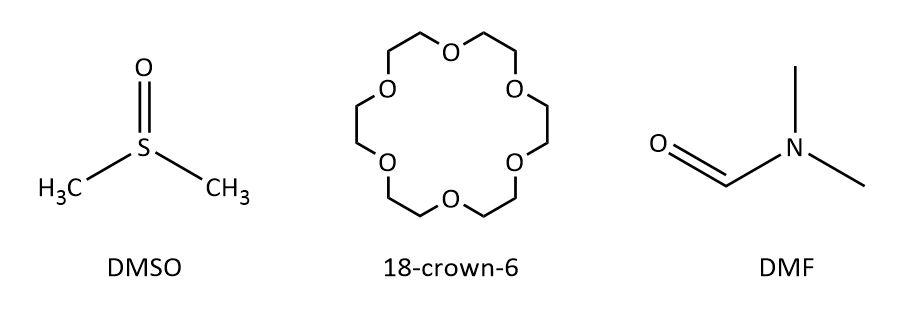
Answer
464.1k+ views
Hint: Polar aprotic solvents are those solvents in which we have dipole moment but there is no hydrogen atom attached to electronegative atoms such as oxygen or nitrogen.
Complete step by step answer
We have seen that various solvents are used in chemical reactions and need to be chosen properly. For this reason, it becomes important that we should have some basic understanding about the solvents. Solvents can be used basically for two purposes including as a medium where it does not participate in the reaction but facilitates the reaction by dissolving the reactants in it. In other cases, solvent can also take part in the reaction by making available an acidic or basic source or that of electrons. As we can see that choice of solvent must be made with care and to help us with that we will have a look at different types of solvents.
We can divide solvents into two categories namely polar and non-polar. As the name suggests, in polar solvents we have polarity as bond dipole moments which is absent in non-polar Now, we can further classify the polar solvents as protic and aprotic. We can understand this in terms of availability of protons which basically means that in protic solvents, we have an acidic hydrogen atom for being attached to a more electronegative atom but not in case of aprotic solvents.
Now, let’s have a look at the structures of given solvents and try to classify them as per the above discussion:

Now, we can see that DMSO which is an abbreviation for dimethyl sulfoxide, $18 - {\rm{crown}} - {\rm{6}}$ which is an example of crown ethers and DMF that is short for dimethylformamide; all three of them have bond dipoles but none of them have hydrogen attached to oxygen or nitrogen. So, we can say that all of them are polar aprotic solvents.
Hence, the correct option is D.
Note:
We can see that aprotic solvents can have hydrogen atoms present in the molecule but what we look for is to be attached to the electronegative atoms $\left( {{\rm{F,O,N}}} \right)$ and that is absent here.
Complete step by step answer
We have seen that various solvents are used in chemical reactions and need to be chosen properly. For this reason, it becomes important that we should have some basic understanding about the solvents. Solvents can be used basically for two purposes including as a medium where it does not participate in the reaction but facilitates the reaction by dissolving the reactants in it. In other cases, solvent can also take part in the reaction by making available an acidic or basic source or that of electrons. As we can see that choice of solvent must be made with care and to help us with that we will have a look at different types of solvents.
We can divide solvents into two categories namely polar and non-polar. As the name suggests, in polar solvents we have polarity as bond dipole moments which is absent in non-polar Now, we can further classify the polar solvents as protic and aprotic. We can understand this in terms of availability of protons which basically means that in protic solvents, we have an acidic hydrogen atom for being attached to a more electronegative atom but not in case of aprotic solvents.
Now, let’s have a look at the structures of given solvents and try to classify them as per the above discussion:

Now, we can see that DMSO which is an abbreviation for dimethyl sulfoxide, $18 - {\rm{crown}} - {\rm{6}}$ which is an example of crown ethers and DMF that is short for dimethylformamide; all three of them have bond dipoles but none of them have hydrogen attached to oxygen or nitrogen. So, we can say that all of them are polar aprotic solvents.
Hence, the correct option is D.
Note:
We can see that aprotic solvents can have hydrogen atoms present in the molecule but what we look for is to be attached to the electronegative atoms $\left( {{\rm{F,O,N}}} \right)$ and that is absent here.
Recently Updated Pages
Master Class 9 Science: Engaging Questions & Answers for Success

Master Class 9 English: Engaging Questions & Answers for Success

Class 9 Question and Answer - Your Ultimate Solutions Guide

Master Class 9 Maths: Engaging Questions & Answers for Success

Master Class 9 General Knowledge: Engaging Questions & Answers for Success

Class 10 Question and Answer - Your Ultimate Solutions Guide

Trending doubts
Difference between Prokaryotic cell and Eukaryotic class 11 biology CBSE

State and prove Bernoullis theorem class 11 physics CBSE

Pigmented layer in the eye is called as a Cornea b class 11 biology CBSE

10 examples of friction in our daily life

The lightest gas is A nitrogen B helium C oxygen D class 11 chemistry CBSE

State the laws of reflection of light




